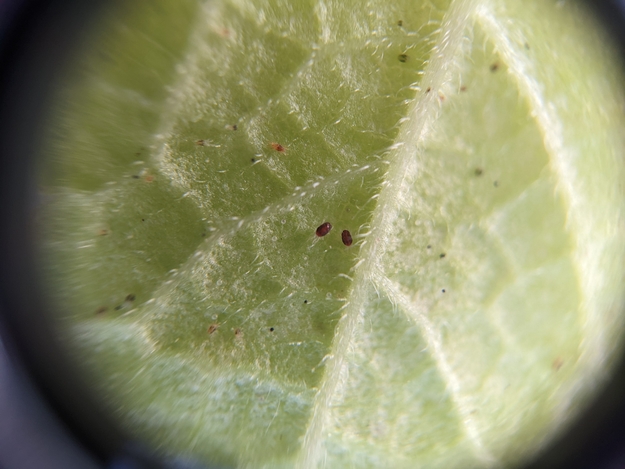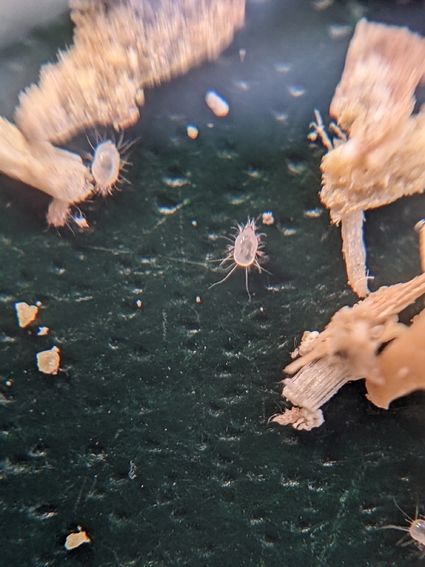As an arachnid, spider mites have 8 legs. But that's not always the case. In it's early development stage, as a nymph, it only has 6. The time rate until the crawler reaches adulthood, depends on the temperature and climate conditions. Low humidity and above 12 C, the development time reduces drastically. An adult female can produce 10 eggs a day, from which 75% are female. With decreasing temperatures, the mites go into hibernation, and hide between plant debris and soil parts. In spring they immediately start laying eggs and continue the infestation cycle.
Pest Control - Two spotted Spider Mites
Infosheet about the two spotted Spider Mite
Mites are a threat to many indoor and outdoor crops. Despite their size, the damage they exercise on their host plants is severe. That is to a great part, due to their rapid population growth rate. If not monitored, they take over plants, which ultimately die from the exhaustion the pest brings upon them. In the following paragraphs I further introduce this pests characteristics and how one should act against them.

Symptoms
Mites can be recognized upon yellow dots on the upper side of leaves. These are dead cells. On the bottom side of the leaf, they appear as moving red dots. By piercing cells with their mouth parts, they suck out the contents of the leaf, which then dies. The destruction of the leaf cells leads to reduced photosynthesis, increased transpiration and reduced plant growth. With increased damage first the leaf then the plant may die.
Another hint to their presence are webs, through which they can move from branch to branch.
Pest control
Due to the quick reproduction cycle of mites, it is hard to contain the outbreak. It is important to monitor the development of a population and the plants for symptoms.
A biological control measure would be the use of Predatory mites. Phytoseiulus persimilis is great because of their faster reproduction and development cycle. Unfortunately, the predator has no eyes. It finds it's prey via it's scent. The plant itself also can give of chemical substances to lead the way. Once the Predatory mite caught a victim, it pierces it with it's mouth parts and sucks it dry.
Another natural predator is the larva of the Gall midge, which paralyzes it's prey and sucks out it's content.
There are also chemical solutions, to which the mites can develop a quick resistance due to the quick reproduction cycles and a large exchange of genes.
